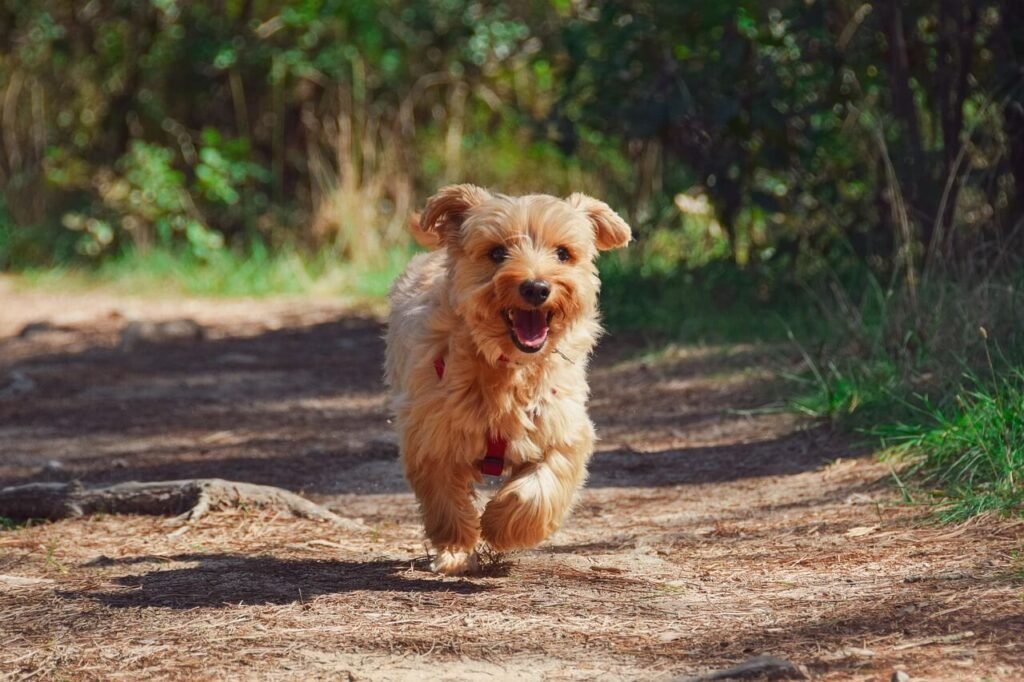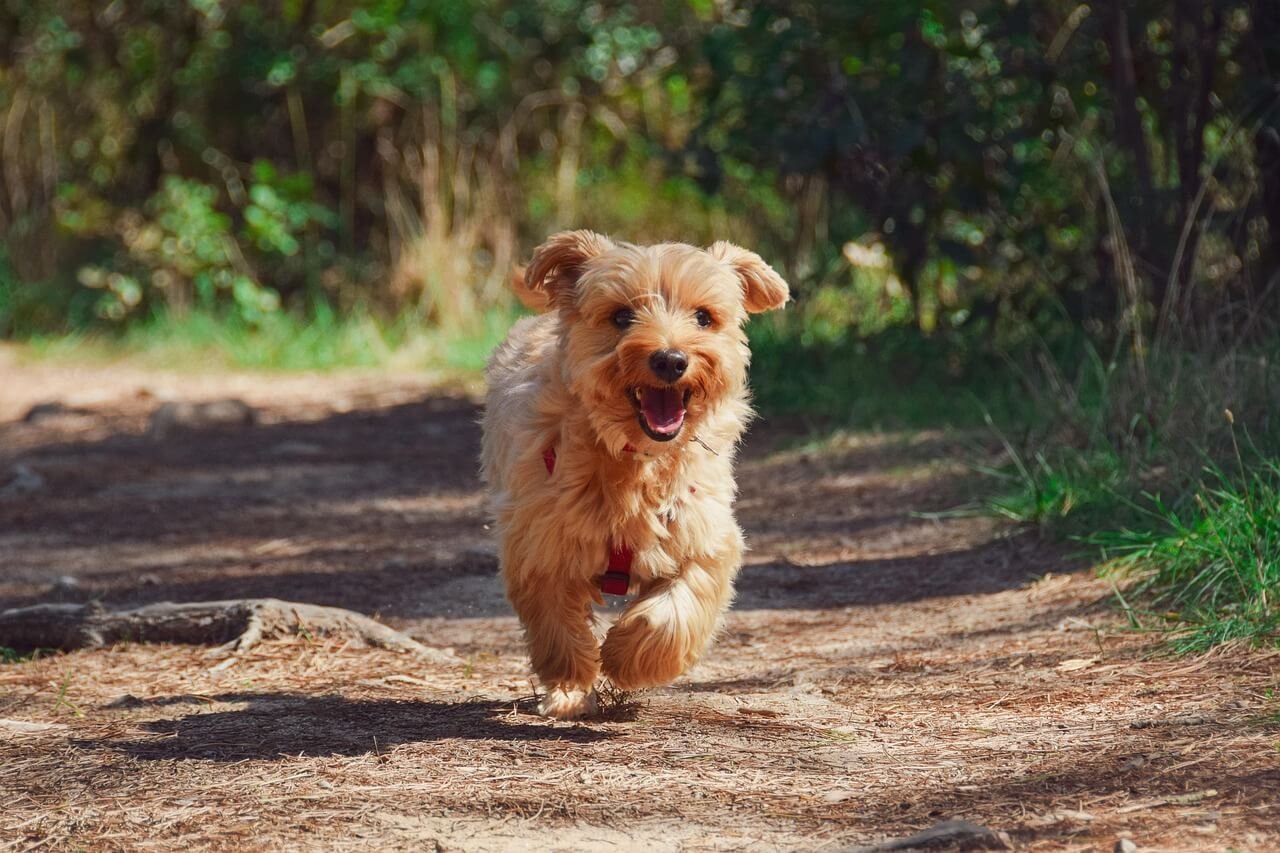Why Is My Dog Breathing Fast? Understanding the Signs and Solutions
If you’ve noticed your dog breathing faster than usual, it’s natural to feel concerned. Rapid breathing in dogs can be a sign of excitement, stress, or even an underlying health issue. As pet owners, we want to ensure our furry friends are happy, healthy, and comfortable. In this blog post, we’ll explore the potential causes of fast breathing in dogs, how to identify when it’s normal versus when it might indicate a problem, and what steps you can take to help your pup breathe easier. Let’s dive into understanding this behavior and what it means for your dog’s well-being.
Common Causes of Fast Breathing in Dogs
Fast breathing in dogs can stem from a variety of factors, some harmless and others requiring attention. Below is a list of common reasons why your dog might be breathing rapidly, along with insights into each cause.
Excitement or Physical Activity
Dogs often breathe faster after exercise or during playtime. This is their way of cooling down and replenishing oxygen levels.Stress or Anxiety
Just like humans, dogs can experience rapid breathing when they’re feeling stressed, anxious, or scared. Loud noises or unfamiliar environments are common triggers.Heat Exhaustion
On hot days, dogs may pant heavily to regulate their body temperature. Without proper hydration or shade, this can escalate into heatstroke.Pain or Discomfort
If your dog is injured or experiencing pain, rapid breathing could be a sign that something is wrong. Pay close attention to other symptoms like limping or whining.Respiratory Issues
Conditions such as asthma, pneumonia, or allergies can lead to labored or rapid breathing. These issues require prompt veterinary care.
Understanding these causes can help you determine whether your dog’s fast breathing is a normal response or a sign of something more serious. Always observe your dog’s overall behavior to gauge if further action is needed.
Signs That Your Dog’s Fast Breathing May Be a Problem
While occasional fast breathing is usually harmless, there are certain signs that indicate your dog may need medical attention. Here’s what to look out for:
Persistent Heavy Panting
If your dog continues to breathe rapidly even after resting or calming down, it could signal an underlying issue.Coughing or Wheezing
These sounds often accompany respiratory problems and should not be ignored.Blue Gums or Tongue
This discoloration indicates a lack of oxygen and requires immediate veterinary intervention.Lethargy or Weakness
If your dog seems unusually tired or unresponsive, it may be struggling with a health condition.Fever or Vomiting
These symptoms paired with rapid breathing could point to an infection or other serious illness.
By staying vigilant and recognizing these warning signs, you can act quickly to ensure your dog receives the care it needs. Remember, early detection often makes all the difference in treatment outcomes.
Check this guide 👉Why Is My Dog Gagging? Best 7 Behavior Tips!
Check this guide 👉Why Does My Dog Yawn When I Pet Him? Best 7 Behavior Tips!
Check this guide 👉Why Is My Dog Scooting Their Butt on the Floor? Best 7 Tips!

When to Monitor Your Dog’s Breathing | When to Seek Veterinary Help |
|---|---|
After vigorous exercise | Persistent heavy panting |
During warm weather | Blue gums or tongue |
Moments of excitement | Coughing or wheezing |
Stressful situations | Lethargy or weakness |
Short periods of restlessness | Fever or vomiting |
How to Calm Your Dog’s Fast Breathing
If your dog’s rapid breathing isn’t caused by a medical emergency, there are several steps you can take to help them relax and breathe normally again. Consider the following tips:
Provide a Cool Environment
Ensure your dog has access to shade, fresh water, and a fan or air conditioning on hot days.Create a Calm Space
Remove stressors from your dog’s environment and offer a quiet, comfortable area where they can unwind.Engage in Gentle Play
Sometimes redirecting their energy through light play can help regulate their breathing.Use Soothing Techniques
Petting, speaking softly, or playing calming music can ease anxiety-related rapid breathing.Monitor Their Diet
Avoid overfeeding before or after exercise, as this can contribute to discomfort and heavier panting.
These strategies can make a significant difference in helping your dog feel more relaxed. However, if the fast breathing persists despite your efforts, consult a veterinarian for further guidance.
Preventive Measures to Keep Your Dog Healthy
Prevention is always better than cure. By taking proactive steps, you can reduce the likelihood of your dog developing conditions that lead to fast breathing. Here are some preventive measures to consider:
Regular Vet Check-Ups
Routine visits allow your vet to catch potential health issues early before they become severe.Maintain a Balanced Diet
A nutritious diet supports overall health, including respiratory function.Exercise Moderately
Balance activity levels to prevent exhaustion while keeping your dog fit.Keep Them Hydrated
Always provide clean, fresh water to avoid dehydration, especially in hot weather.Minimize Stress Triggers
Identify and eliminate sources of anxiety, such as loud noises or chaotic environments.
By incorporating these practices into your dog’s daily routine, you can promote long-term health and well-being. Prevention ensures your dog stays happy and active for years to come.
How to Identify Normal Breathing Patterns in Dogs
Understanding what constitutes normal breathing for your dog is essential in recognizing when something might be off. Every dog is unique, but there are general guidelines to help you assess their breathing habits.
Observe Their Resting Breathing Rate
A healthy dog typically takes 10-30 breaths per minute while at rest. Use a timer to count their breaths and ensure they fall within this range.Notice the Rhythm of Their Breaths
Normal breathing should be steady and consistent. Irregular patterns, such as gasping or pauses, may indicate an issue.Check for Comfortable Body Language
A relaxed posture with minimal panting suggests your dog is calm and breathing normally.Listen for Unusual Noises
While some dogs snore or snort occasionally, persistent wheezing or rattling sounds warrant further investigation.Compare Activity Levels to Breathing
After exercise, rapid breathing is expected, but it should slow down within 10-15 minutes of rest.
By familiarizing yourself with these indicators, you’ll be better equipped to spot abnormalities early on. Regular observation builds trust and strengthens your bond with your furry companion.
Steps to Take When Your Dog’s Breathing Seems Abnormal
If you notice irregularities in your dog’s breathing, acting promptly can prevent complications. Here’s a step-by-step guide to help you respond effectively:
Stay Calm and Assess the Situation
Your dog can sense your emotions, so remaining composed will help them feel more secure. Observe their surroundings and behavior for clues.Move Them to a Safe Environment
If your dog is exposed to heat, smoke, or loud noises, relocate them to a cooler, quieter area immediately.Offer Fresh Water
Dehydration can exacerbate breathing difficulties. Provide access to clean water, but don’t force them to drink if they’re uninterested.Avoid Overstimulation
Limit physical activity and keep interactions gentle until their breathing stabilizes.Contact a Vet If Symptoms Persist
If your dog’s condition doesn’t improve within a reasonable timeframe, seek professional advice without delay.
Taking these steps ensures your dog receives the care they need while minimizing stress. Remember, your quick response could make all the difference in their recovery.
Ways to Support Your Dog’s Respiratory Health Long-Term
Promoting strong respiratory health in your dog involves consistent care and attention. These practices can help maintain optimal breathing function throughout their life.
Maintain a Smoke-Free Home
Secondhand smoke can irritate your dog’s lungs, so avoid smoking indoors or around them.Use Air Purifiers
These devices reduce airborne allergens and pollutants that could affect your dog’s breathing.Brush Their Coat Regularly
Removing loose fur and debris prevents particles from entering their airways during grooming sessions.Incorporate Nose-to-Brain Games
Activities like scent work engage their nasal passages and promote healthy airflow.Monitor Weight Management
Excess weight can strain the respiratory system, so ensure your dog maintains a healthy body condition.
By adopting these habits, you create a supportive environment that fosters your dog’s overall respiratory well-being. Small changes today can lead to significant benefits tomorrow, ensuring your pup enjoys a long, happy life by your side.
FAQ
Is fast breathing in dogs always a cause for concern?
Not necessarily. Fast breathing can be normal after exercise or during stressful situations. However, persistent or unusual rapid breathing should be evaluated by a vet.
How do I know if my dog is overheating?
Signs include excessive panting, drooling, lethargy, and warm skin. Move your dog to a cooler area immediately and contact a vet if symptoms worsen.
Can allergies cause rapid breathing in dogs?
Yes, allergies can irritate the respiratory system, leading to faster breathing. Consult your vet for allergy testing and treatment options.
Should I worry about my dog’s breathing at night?
Occasional nighttime panting is normal, but consistent heavy breathing during sleep could indicate an underlying issue. Monitor closely and seek advice if unsure.
What should I do if my dog’s gums turn blue?
This is a medical emergency. Blue gums indicate oxygen deprivation, so take your dog to the vet immediately.
Final Thoughts: Staying Attuned to Your Dog’s Needs
As a loving pet owner, paying attention to changes in your dog’s behavior—like fast breathing—is crucial for their well-being. While many instances of rapid breathing are harmless, being aware of potential red flags ensures you can act swiftly when necessary. By combining preventive care, observation, and timely veterinary support, you can keep your furry companion healthy and thriving. Remember, your dog relies on you to notice the little things that make a big difference. Stay attentive, stay informed, and cherish every moment with your loyal friend.
Cuterebra Larvae in Cats: Best 7 Expert Tips! – Expert advice on signs, treatment & prevention of this rare but serious feline parasitic infestation.
Cuterebra Larvae in Dogs: Best 7 Expert Tips! – Expert advice on signs, treatment & prevention of this rare but serious parasitic infestation.
Cat Tumor on Paw: Best 7 Expert Tips! – Expert advice on signs, diagnosis, treatment & care for feline paw tumors.
Panacur Side Effects in Dogs: Best 7 Expert Tips! – Safe usage, common reactions & when to call the vet.





